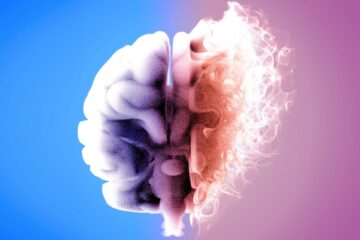Kermit Pattison in Scientific American:
 No part of our body is as perishable as the brain. Within minutes of losing its supply of blood and oxygen, our delicate neurological machinery begins to suffer irreversible damage. The brain is our most energy-greedy organ, and in the hours after death, its enzymes typically devour it from within. As cellular membranes rupture, the brain liquifies. Within days, microbes may consume the remnants in the stinky process of putrefaction. In a few years, the skull becomes just an empty cavity.
No part of our body is as perishable as the brain. Within minutes of losing its supply of blood and oxygen, our delicate neurological machinery begins to suffer irreversible damage. The brain is our most energy-greedy organ, and in the hours after death, its enzymes typically devour it from within. As cellular membranes rupture, the brain liquifies. Within days, microbes may consume the remnants in the stinky process of putrefaction. In a few years, the skull becomes just an empty cavity.
In some cases, however, brains outlast all other soft tissues and remain intact for hundreds or thousands of years. Archaeologists have been mystified to discover naturally preserved brains in ancient graveyards, tombs, mass graves and even shipwrecks. Scientists at the University of Oxford published a study earlier this year that revealed that such brains are more common than previously recognized. By surveying centuries of scientific literature, researchers counted more than 4,400 cases of preserved brains that were up to 12,000 years old. “The brain just decays super quickly, and it’s really weird that we find it preserved,” says Alexandra Morton-Hayward, a molecular scientist at Oxford and lead author of the new study. “My overarching question is: Why on Earth is this possible? Why is it happening in the brain and no other organ?” Such unusual preservation involves the “misfolding” of proteins—the cellular building blocks—and bears intriguing similarities to the pathologies that cause some neurodegenerative conditions.
More here.
Enjoying the content on 3QD? Help keep us going by donating now.
